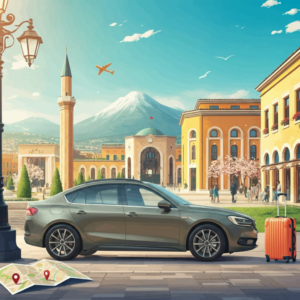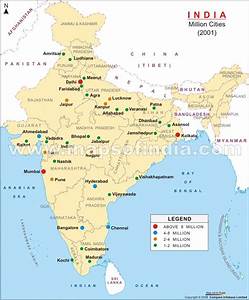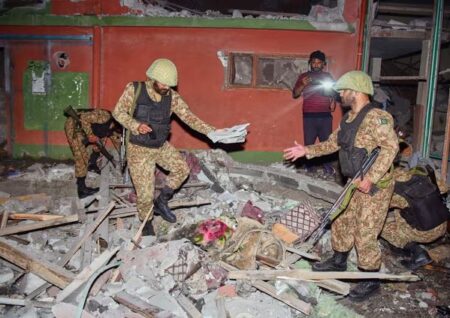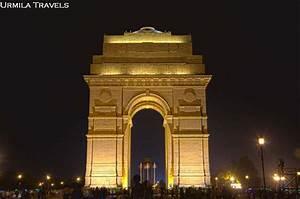India, home to a rich tapestry of languages and cultures, also boasts a capital city brimming with history, significance, and intrigue. Whether you’re a traveler eager to explore, a student researching for a project, or a history enthusiast fascinated by India’s vibrant past, this blog has something for everyone.
Today, we’re uncovering everything you need to know about Delhi, the capital city of India, from its historic landmarks to its political significance, and even its fascinating transition from Calcutta to Delhi as the nation’s capital.
Understanding Delhi’s Geographical Significance
Situated in north-central India, Delhi occupies a prime position on the Gangetic Plain, one of the most fertile and strategically important regions in the country. The city spreads across the Delhi Metropolitan Area, with the National Capital Territory of Delhi (NCT) at its heart. Comprising approximately 16.5 square miles, it integrates densely populated residential areas with large open spaces scattered across the urban landscape. Delhi’s lifeline, the Yamuna River, runs nearby, offering both resources and historic significance to the region.
Travelers arriving in Delhi may find themselves intrigued by its mix of the old and the new. Historically, Delhi’s strategic setting along major trade routes made it a thriving center of power for the Indian Empire and remains a lynchpin of India’s development today.
A Historical Journey from Calcutta to Delhi
Delhi’s status as the capital of India was officially established on December 12, 1911, at the Delhi Durbar during the reign of British India. Before this, the city of Calcutta (modern-day Kolkata) served as the capital. However, British authorities saw Delhi’s central location as a political and logistical advantage.
The decision to shift the capital from Calcutta to Delhi had profound implications. It marked the re-establishment of Delhi as the heart of governance, a position it had enjoyed during Mughal rule and even earlier empires. The long process of urban planning culminated in the creation of New Delhi, a sophisticated city designed by British architects Edwin Lutyens and Herbert Baker, which continues to serve as the seat of power. New Delhi was officially inaugurated on February 13, 1931.
A Hub of Governance and Administration
Today, Delhi hosts some of India’s most critical institutions, cementing its role as the nation’s capital. At its core is the Rashtrapati Bhavan, the official residence of the President of India, a grand structure that exudes both political power and architectural splendor.
Delhi also houses the Supreme Court of India, the country’s apex judicial body upholding constitutional law. It plays a pivotal role in ensuring justice across the country.
The city’s administrative structure is remarkably intricate. The Delhi Municipal Council governs local areas within the capital, while the National Capital Region (NCR) extends far beyond Delhi’s boundaries, incorporating adjoining areas such as Gurgaon, Noida, and Ghaziabad. This integration underscores Delhi’s status as not just a city, but as an urban powerhouse with regional influence.
Exploring Delhi’s Cultural and Historical Landmarks
Delhi offers travelers a wealth of cultural experiences and historical landmarks. From ancient ruins to bustling markets, its streets radiate with centuries of history. Every turn narrates a story that reveals its colorful past and rapid modernity.
A Walk Through History
- Humayun’s Tomb and the Qutub Minar are splendid examples of Delhi’s architectural heritage, reflecting the artistic achievements of the Mughal era.
- The Red Fort, once the residence of Mughal emperors, played a key role in India’s early governance. Today, it is where the Prime Minister hoists the national flag every Independence Day (August 15).
- India Gate, an iconic war memorial, stands as a tribute to the 84,000 soldiers of British India who lost their lives during World War I.
A Glimpse of Modernity
Beyond its historical legacy, Delhi also serves as a modern hub for shopping, food, and culture. Connaught Place, Khan Market, and South Delhi remain hotspots for locals and tourists alike.
For gastronomic adventures, from chaat to Mughlai cuisine, Delhi’s food scene is unmissable. Ample green spaces like the Lodhi Gardens offer tranquil moments amidst the city’s buzz.
From Independence to Today
The symbolic importance of Delhi as the nation’s capital only deepened when India gained that much-deserved independence in 1947. The city transformed overnight into the political epicenter of democratic India, supporting its efforts to build a self-reliant and thriving nation.
Since then, Delhi has grown exponentially. It is more than just the political capital of the country; it is a representation of India’s progress, a place rich in culture, and a bridge between the nation’s past and future.
Why Should You Visit Delhi?
Still trying to decide whether to add Delhi to your travel itinerary? Here are a few reasons to convince you:
- Rich History: From the Indian Empire to British India, the city is a treasure trove for history buffs who want to understand centuries of conquests and civilizations.
- Cultural Diversity: Representing every state of India, Delhi offers a blend of culture, language, and cuisine that showcases the entire country.
- Accessibility: Positioned perfectly in northern India and part of the well-connected National Capital Region, it’s a gateway to other stunning destinations.
Whether you’re studying the socio-political systems shaped by the Supreme Court of India, admiring fine architecture like the Rashtrapati Bhavan, or simply exploring the sprawling bazaars of the National Capital Territory, Delhi delivers a unique experience.
Delhi Capital:
Delhi, officially known as the National Capital Territory (NCT) of Delhi, is the capital of India. It is one of the most populous cities in India, with a rich history and culture. Delhi serves as the political and administrative center of the country, housing the Indian Parliament, the President’s residence, and the Supreme Court. The city blends ancient monuments like the Red Fort and Qutub Minar with modern infrastructure. Delhi is a hub for commerce, education, and diplomacy, and it plays a crucial role in the nation’s governance.
Kolkata Capital:
Kolkata, formerly known as Calcutta, is the capital of the Indian state of West Bengal. It is one of India’s most culturally significant cities, known for its colonial architecture, literature, and art. Kolkata served as the capital of British India until 1911 before Delhi took over. The city is a vibrant hub for intellectuals, poets, and artists, and is home to prestigious institutions like the University of Calcutta and the Indian Museum. Kolkata is famous for its festivals, especially Durga Puja, and its legacy in the fields of cinema, literature, and history.
Chennai Capital:
Chennai is the capital of the Indian state of Tamil Nadu, located on the southeastern coast of India. Known as the “Gateway to South India,” Chennai is a major cultural, economic, and educational center. The city is home to a thriving IT industry, prominent educational institutions, and a bustling port. Chennai is famous for its classical music, dance forms, and vibrant film industry, known as Kollywood. The city also boasts of historical landmarks like the Kapaleeshwarar Temple and the Marina Beach, one of the longest urban beaches in the world.
Goa Capital Panaji:
Panaji, also known as Panjim, is the capital of the Indian state of Goa. Located along the Mandovi River, it is a picturesque city with a unique blend of Portuguese and Indian influences. Panaji is known for its colonial architecture, cobbled streets, and vibrant cultural scene. The city is the administrative and political center of Goa, hosting the state legislative assembly and other government offices. Panaji is famous for its festivals, including Carnival and Shigmo, and attracts tourists for its beautiful beaches, historic churches, and lively atmosphere.
Capital City of Himachal Pradesh:
Shimla is the capital city of Himachal Pradesh, located in the northern part of India. Nestled in the picturesque Himalayan foothills, Shimla is known for its pleasant climate, colonial architecture, and scenic beauty. It was once the summer capital of British India. Today, Shimla is a popular tourist destination, attracting visitors for its natural beauty, temples, and vibrant Mall Road. The city is also an important administrative and political center for the state, with various government offices and institutions based here.
Capital of Sikkim:
Gangtok is the capital of Sikkim, a small state located in northeastern India. It is situated on a ridge at an altitude of 1,650 meters and offers panoramic views of the Himalayas, including the majestic Kanchenjunga peak. Gangtok is a major tourist destination, known for its monasteries, vibrant culture, and natural beauty. It serves as the administrative, political, and economic center of Sikkim. The city also plays a key role in promoting eco-tourism and sustainability, attracting visitors to explore its trekking trails, lush landscapes, and Buddhist heritage.
Pondicherry Capital City:
Puducherry, often referred to as Pondicherry, is the capital of the Union Territory of Puducherry. Located on the southeastern coast of India, it is known for its French colonial architecture, serene beaches, and vibrant culture. Puducherry was a French colonial settlement until 1954, and its French influence is still visible in the city’s streets, cafes, and public buildings. The city is also famous for its spiritual significance, being home to the Aurobindo Ashram and the Auroville International Township, a global community dedicated to human unity and peace.
Kolkata Capital City:
Kolkata, the capital city of West Bengal, is one of India’s oldest and most culturally significant cities. Located on the banks of the Hooghly River, Kolkata has a rich colonial history and is known for its art, literature, and intellectual legacy. It was the capital of British India until 1911, after which New Delhi took over. The city is home to iconic landmarks like Victoria Memorial, Howrah Bridge, and Kalighat Temple. Kolkata is also known for its vibrant festivals, including Durga Puja, and has a thriving theater and film industry.
Union Territories of India with Capital:
India has 8 union territories, each with its own capital. These union territories include Delhi, Puducherry, Chandigarh, Jammu & Kashmir, Ladakh, Lakshadweep, Andaman and Nicobar Islands, and Dadra and Nagar Haveli and Daman and Diu. Delhi, the national capital, serves as both a union territory and the capital of India. Chandigarh is the capital of both Haryana and Punjab. Jammu & Kashmir and Ladakh have their own capitals—Srinagar and Leh, respectively—while Puducherry retains its French colonial charm. Each union territory has its own unique cultural and administrative significance.
Chennai Capital City:
Chennai, the capital of Tamil Nadu, is one of India’s most important cultural and economic centers. Located on the southeastern coast, it is known for its thriving IT industry, educational institutions, and classical arts. The city’s history dates back centuries, with a blend of traditional and modern elements. Landmarks like the Kapaleeshwarar Temple, Marina Beach, and Fort St. George highlight its historical richness. Chennai is also famous for its vibrant film industry, known as Kollywood, and its culinary heritage, especially its famous South Indian cuisine, including dosa and idli.
Guwahati Capital:
Guwahati is the largest city in the northeastern state of Assam and is often referred to as its gateway. While it is not the capital of Assam, which is Dispur, Guwahati is the region’s commercial, educational, and cultural hub. Located on the banks of the Brahmaputra River, Guwahati is known for its natural beauty, including Kaziranga National Park, famous for its rhinos. The city also houses historical landmarks such as Kamakhya Temple and Umananda Temple. Guwahati is central to trade, transport, and tourism in the northeast region of India.
Bengaluru Capital:
Bengaluru, formerly known as Bangalore, is the capital of the Indian state of Karnataka. Located in the southern part of India, Bengaluru is known as the “Silicon Valley of India” due to its thriving information technology (IT) industry. The city is a major economic hub, home to numerous tech companies, startups, and educational institutions. Bengaluru also boasts a pleasant climate, vibrant culture, and diverse population. Known for its parks, lakes, and historical landmarks like Bangalore Palace, it is also an important center for aerospace, biotechnology, and research in India.
Capital Bangalore:
Bangalore, now called Bengaluru, is the capital of Karnataka, a state in southern India. Known as the “Silicon Valley of India,” it is a major center for the IT industry, hosting many global tech giants and startups. Bengaluru’s pleasant climate and cosmopolitan lifestyle attract professionals and students from all over India and abroad. The city also has a rich cultural heritage, with landmarks such as Lalbagh Botanical Garden and Bangalore Palace. Besides its tech prowess, Bengaluru is an educational hub and an important center for research and development in India.
New Delhi Capital:
New Delhi is the capital of India, both as a city and as a federal territory. It is the political and administrative center of the country, housing the Indian government’s key institutions, including the Parliament, the Supreme Court, and the President’s residence. New Delhi is known for its mix of ancient and modern infrastructure, from historic monuments like the Red Fort and Qutub Minar to contemporary buildings and government offices. The city also serves as the hub for Indian diplomacy, hosting embassies from various countries and playing a central role in the country’s governance.
Leh Ladakh Capital:
Leh is the capital of Ladakh, a union territory in northern India. Situated in the high-altitude desert of the Himalayas, Leh is known for its breathtaking landscapes, including rugged mountains, crystal-clear lakes, and ancient Buddhist monasteries. It is a popular destination for adventure tourism, trekking, and mountaineering. Leh serves as the administrative and political center of Ladakh and is known for its unique culture, influenced by Tibetan Buddhism. The city is a gateway to several popular tourist spots in Ladakh, including Pangong Lake and Nubra Valley, and plays a vital role in the region’s development.
Capital City of Ladakh:
The capital of Ladakh, a union territory in northern India, is Leh. Leh is located at an altitude of approximately 3,500 meters above sea level and serves as the administrative, cultural, and economic center of Ladakh. The region is famous for its unique Buddhist culture, stunning landscapes, and outdoor activities like trekking and mountaineering. Leh is a popular destination for tourists who visit to explore its monasteries, such as Hemis and Thiksey, and natural wonders like Pangong Lake and Nubra Valley. The city is crucial for Ladakh’s development and its connections to the rest of India.
Panaji Capital:
Panaji, also known as Panjim, is the capital city of Goa, an Indian state located on the western coast. The city is known for its charming Portuguese colonial architecture, tranquil beaches, and vibrant culture. Panaji serves as the administrative center of Goa and is famous for its beautiful riverside setting along the Mandovi River. Key attractions in Panaji include the Church of Our Lady of the Immaculate Conception, the Fontainhas Latin Quarter, and Miramar Beach. The city also hosts various cultural festivals, such as Carnival and Shigmo, which celebrate the state’s rich heritage and traditions.
Panaji Town:
Panaji, the capital of Goa, is a picturesque town located on the banks of the Mandovi River. It is known for its colonial-era buildings, narrow winding streets, and vibrant cultural scene. The town offers a unique blend of Indian and Portuguese influences, seen in its architecture and festivals. Panaji’s charm lies in its quiet atmosphere, vibrant markets, and scenic riverfront. Key landmarks in the town include the Church of Our Lady of the Immaculate Conception, the Fontainhas Latin Quarter, and the Dona Paula viewpoint, all of which showcase the town’s historical and cultural significance.
Capital of Coorg:
Coorg, also known as Kodagu, is a district in the southern state of Karnataka. The capital of Coorg is Madikeri, a hill station located in the Western Ghats. Madikeri is famous for its lush green landscapes, coffee plantations, and cool climate, making it a popular tourist destination. The town is home to attractions like the Raja’s Seat, Abbey Falls, and the Madikeri Fort. Madikeri is also a base for exploring the surrounding natural beauty, including wildlife sanctuaries and trekking trails, which draw nature lovers and adventure enthusiasts alike.
Panaji is Famous For:
Panaji, the capital city of Goa, is renowned for its beautiful beaches, Portuguese colonial architecture, and vibrant cultural scene. The city is famous for its scenic riverside setting along the Mandovi River, with landmarks like the Church of Our Lady of the Immaculate Conception and the Fontainhas Latin Quarter. Panaji is also known for its lively festivals, including Carnival, Shigmo, and Christmas celebrations. The city’s historic charm, combined with its laid-back coastal vibe, makes it a top destination for both domestic and international tourists seeking a mix of culture, history, and natural beauty.
Capital City Raipur:
Raipur is the capital city of the Indian state of Chhattisgarh. Located in central India, Raipur is a growing industrial and commercial hub, particularly known for its steel industry and the production of various mineral resources. The city also has a rich cultural heritage, with attractions like the Mahant Ghasidas Memorial Museum, Nandan Van Zoo, and the scenic Mawai Lake. Raipur is an important transportation center in the region and hosts various festivals, including the famous Chhattisgarh state festival, showcasing the state’s traditional music, dance, and arts.
Capital City Pune:
Pune, a major city in Maharashtra, is often referred to as the “Oxford of the East” due to its prominent educational institutions. Pune is known for its rich cultural heritage, historical landmarks, and modern infrastructure. The city has a thriving IT industry and is an important hub for automotive manufacturing. Pune is also famous for its vibrant arts scene, with numerous theaters, galleries, and music festivals. Landmarks such as Shaniwar Wada, Aga Khan Palace, and Sinhagad Fort highlight the city’s historical significance, while its pleasant climate adds to its charm.
Gujarat New Capital:
Gandhinagar is the capital city of Gujarat, an Indian state located on the western coast. The city was planned and developed in the 1960s as a modern administrative center. Gandhinagar is known for its clean streets, green spaces, and well-organized infrastructure. It is home to the Gujarat Vidhan Sabha (state assembly), and many government offices. The city also boasts attractions like the Akshardham Temple and the Indroda Nature Park. Gandhinagar plays a crucial role in Gujarat’s administration, while the state’s commercial and economic activities are concentrated in Ahmedabad, another major city.
India, a vast and diverse country, is composed of 28 states and 8 union territories, each with its own unique identity and significance. The India capital is New Delhi, the political and administrative heart of the nation. New Delhi serves not only as the capital city of India but also as a center of governance and diplomacy. It is home to critical institutions like the Indian Parliament, the Supreme Court, and the President’s residence.
Each of the Indian states and its capitals plays an essential role in the governance and development of the country. For example, Mumbai, the financial capital of India, is the capital of Maharashtra, while Bengaluru, the tech hub, serves as the capital of Karnataka. Chennai, the capital of Tamil Nadu, is renowned for its rich cultural heritage and vibrant economy. India states and their capitals include cities like Kolkata (West Bengal), Jaipur (Rajasthan), and Bhopal (Madhya Pradesh), each known for their historical significance and economic importance.
When looking at India’s all states and their capitals, it becomes clear that the diversity of the country is reflected in the variety of capitals across its states and union territories. Some capitals, like Gandhinagar (Gujarat), are known for their modern urban planning, while others, like Lucknow (Uttar Pradesh), have rich cultural and historical backgrounds. The state capital list of India includes major cities such as Hyderabad (Telangana), Patna (Bihar), and Ahmedabad (Gujarat), all of which contribute significantly to the country’s economy and culture.
The Indian states and capital cities are not just administrative centers; they are also hubs for education, healthcare, industry, and tourism, contributing to India’s overall development. Understanding India’s all states and their capitals gives insight into the administrative structure and governance of the country, making each city an important part of India’s thriving democracy and economy.
Your Next Step
Delhi, with its captivating blend of history, politics, and humanity, has something for everyone. Whether you’re intrigued by its administrative role as the capital of India, its geographic significance along the bank of the Yamuna River, or its transformation from British India to modern democracy, there’s much to savor and explore.
Plan your visit and experience Delhi for yourself. It’s not just a city; it’s an enduring chapter of India’s incredible story.
From the bustling bazaars of Chandni Chowk to the serene corridors of Humayun’s Tomb, Delhi offers a kaleidoscope of experiences. Wander through the ancient lanes of Old Delhi, where history comes alive with every corner turned, or marvel at the architectural splendor of New Delhi, designed by Sir Edwin Lutyens. Savor the rich flavors of local cuisine, from spicy street snacks to decadent Mughlai dishes, each bite telling a story of the city’s diverse heritage.
For those seeking spirituality, Delhi is home to iconic religious landmarks like the Lotus Temple, Akshardham Temple, and Jama Masjid, offering moments of peace amidst the city’s energetic pace. Meanwhile, the vibrant art scene, lively cultural festivals, and thriving markets make Delhi a dynamic and constantly evolving destination.
Exploring Delhi would be incomplete without a visit to its bustling bazaars, where the essence of the city truly comes alive. Chandni Chowk, one of the oldest and busiest markets, offers a maze of narrow lanes filled with shops selling everything from traditional jewelry and fabrics to mouth-watering street food. For a touch of modernity, Connaught Place and Khan Market provide a mix of high-end brands and trendy cafes, catering to both locals and tourists alike. The city’s charm lies in its ability to seamlessly blend the old with the new, creating an experience that is both timeless and contemporary.






